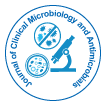

Mini Review - (2021)Volume 5, Issue 1
Plague is a serious irresistible sickness that influences well evolved creatures, including people. It can spread through creature or human contact. The microbes that cause plague live in many pieces of the world, including the United States. Without treatment, plague can be lethal. Plague is a sickness brought about by the bacterium Yersinia pestis (Y. pestis). Plague microscopic organisms are normally present in little warm blooded creatures, like rodents, and in insects that live on them. Contaminated insects can give plague microorganisms to various vertebrates that they feed on, including people [1].
There are three types of plague:
Bubonic Plague: The transmission of bubonic plague regularly occurs through insect chomps. Bubonic plague microbes assault lymph hubs, which are little organs that help the body battle disease. The plague microbes influence the lymph hubs to become delicate and enlarged. These tainted lymph hubs are called buboes.
Pneumonic Plague: Pneumonic plague is the most unsafe type of plague. It influences the lungs and can create in just 24 hours Trusted Source. If not treated rapidly, it tends to be deadly. Pneumonic plague is additionally the solitary type of plague that can spread through human contact.
Septicemic Plague: Septicemic plague manifestations can happen as the main indications of plague, or they can be a consequence of untreated bubonic plague. An individual with septicemic plague might foster dark, kicking the bucket skin tissue.
Symptoms
The three types of plague have varying manifestations in the human body. In any case, all types of plague can cause Trusted Source:
• Sudden fever
• Weakness
• Nausea
• vomiting
• Diarrhoea
• Abdominal torment
• Headache
• Body throbs
Bubonic plague: As indicated by the Centers for Disease Control and Prevention (CDC), an individual with bubonic plague will generally see manifestations inside 2–6 days after openness to the plague microorganisms [2].
Side effects of bubonic plague include:
• One or more enlarged, delicate lymph hubs
• Muscle torment
• Feeling of uneasiness
The buboes framed by bubonic plague are firm and difficult and will frequently show up close to the crotch, armpit, or neck. Whenever left untreated, these buboes can shape into open, discharge filled injuries [3].
Untreated Bubonic Plague can also develop into Pneumonic or Septicemic Plague
Pneumonic plague:
Pneumonic plague can create as fast as 1 day after openness to the microbes. Indications of pneumonic plague include:
• Rapid heartbeat
• Difficulty relaxing
• Pneumonia
• Cough
• Chest torment
• Shortness of breath
• Bloody or watery bodily fluid
Whenever left untreated, pneumonic plague can rapidly prompt organ disappointment, shock, or passing. Notwithstanding, recuperation rates for pneumonic plague are high if an individual gets treatment inside 24 hours of indications creating.
Causes
The most widely recognized reason for plague in people is a nibble from a contaminated insect. Individuals who come into direct contact with tainted liquids or tissues from creatures with plague are likewise in danger of being influenced.
Plague can likewise spread to individuals on the off chance that they breathe in drops inhaled out by an individual, canine, or feline who has pneumonic plague. Pneumonic plague is the lone structure that can spread from one individual to another [4].
Treatment and Prevention
Specialists can analyse plague by gathering an individual's blood, sputum, or lymph hub tissue test. Lab affirmation of plague can require as long as 2 days, thus a specialist might begin to treat an individual with suspected plague effectively subsequent to taking their examples. Specialists can treat plague utilizing anti-toxins. In the event that an individual has pneumonic plague, it very well might be important to put them in a confinement room in the clinic [5].
Despite the fact that plague can begin whenever of year, as indicated by the CDCT, most of cases in the U.S. happen from pre-summer to late-summer. Moreover, plague is generally normal in provincial regions, like New Mexico, Arizona, and Colorado.
Individuals living in regions with hazard of plague should take care to keep away from rodents — like rodents, squirrels, or chipmunks — and bugs. Individuals ought to likewise try not to deal with creature remains here.
Citation: Nath A (2021). What to Know About Plague: Symptoms, Causes, Treatment and Prevention. J Clin Microbiol Antimicrob 5:107.
Received: 12-Aug-2021 Accepted: 25-Aug-2021 Published: 31-Aug-2021 , DOI: 10.35248/jcma.21.5.107
Copyright: © 2021 Nath A. This is an open access article distributed under the terms of the Creative Commons Attribution License, which permits unrestricted use, distribution and reproduction in any medium, provided the original work is properly cited.